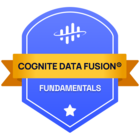Images contain essential information required for optimizing operations. This release of Cognite Data Fusion (CDF) introduces image and video management, where you can upload, organize, and explore the image and video data and add annotations to the images. With the new image contextualization API, you can detect assets tags, text and people using industry-relevant detection models.
We've also made it easier to work with the data flow from a source system into CDF with the option to create, edit, and troubleshoot the extractors' configuration files in the CDF user interface.
Read more below or watch the videos to learn more about this and other improvements in this release.
Image and video management
Images contain information such as the time or location of a photo, a number on a tag, or rust on a pipe. Use the new Image and video management tool to upload and enrich images and videos to CDF. Then, organize and explore your images and videos in a list view, gallery view, or on a map and add or review annotations to the images. Read more
Using the Vision API and the Python and JavaScript SDKs, you can find data based on visual content and link images to assets by analyzing the images with detection models, such as asset tag detection, text detection, and person detection. The person detection model protects privacy and complies with GDPR.
Create and edit extractor configuration files in the CDF user interface
The Cognite extractors connect to source systems and push data to CDF. When you set up or want to change the extractors, you can now create and edit the configuration files to fit your requirements on the Extraction pipeline page. This will reduce the time and effort spent accessing the configuration file on the extractor's host machine and make it easier to iterate and deploy the configurations settings and investigate extractor run issues. Read more
When you're ready to apply the configuration to a production environment, we recommend setting up remote configuration files stored in the cloud using versioned files and continuous integration systems, such as GitHub Actions, or directly with the CDF API. Read more
Point cloud visualization in 3D models
With improved point cloud visualization in the 3D digital twin models, you'll find the rendering of objects clearer, more uniformed and with higher fidelity. This will make it easier to distinguish which object is in front and which is in the back when looking at digital twins.
Place measurements in 3D models
Use the Cognite Reveal SDK to measure simple point to point distances in 3D models by clicking to- and from-points. For example to fit a new piece of equipment in a designated location. The default measurement unit is meters, but the tool provides callbacks to allow configuring the unit.
Historic time series
The CDF time series service now allows data points starting on 01.01.1900T00:00:00Z (1 January 1900), specified as milliseconds since the epoch. This means you can import a more complete time series history to CDF. Time should be specified as a negative integer value for data points prior to midnight on Jan 01, 1970, and as positive integer values for data points after.


 Check the
documentation
Check the
documentation Ask the
Community
Ask the
Community Take a look
at
Academy
Take a look
at
Academy Cognite
Status
Page
Cognite
Status
Page Contact
Cognite Support
Contact
Cognite Support

